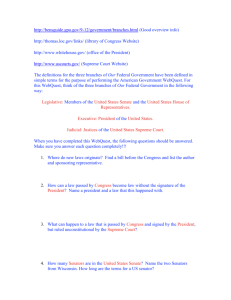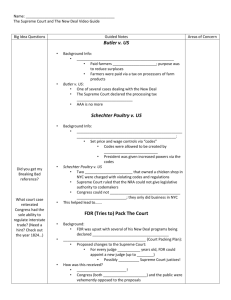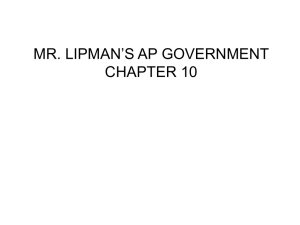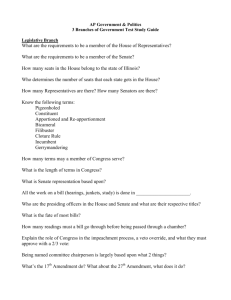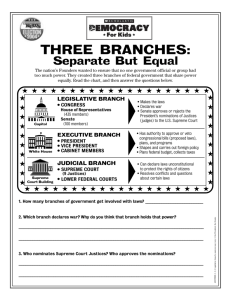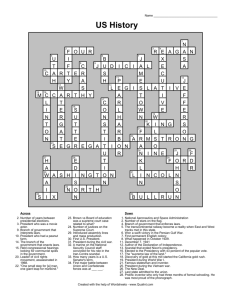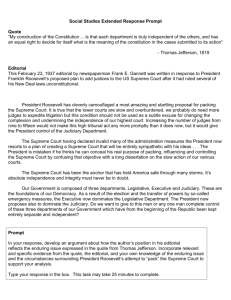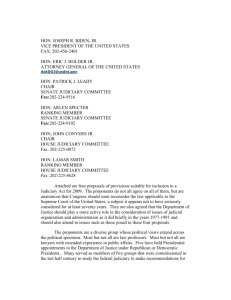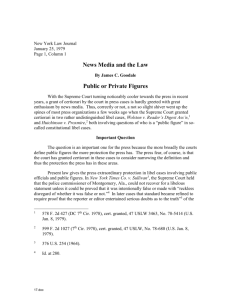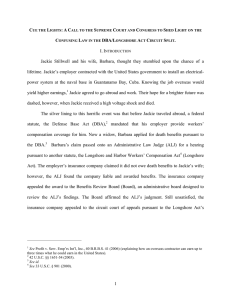Judiciary Act of 1925
advertisement
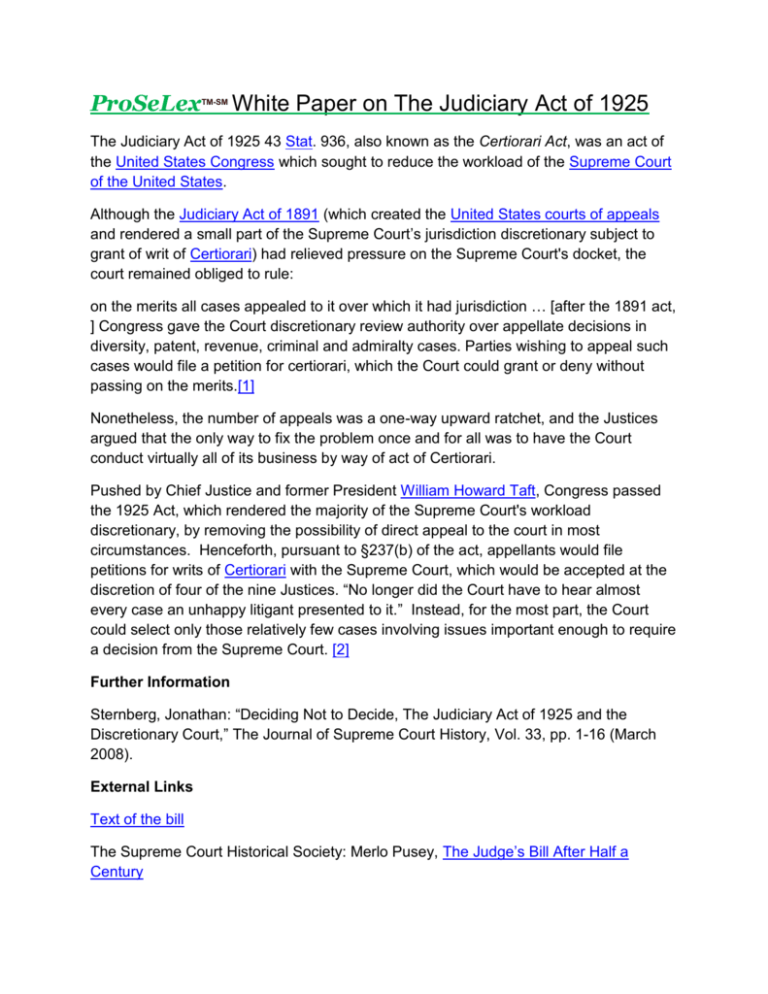
ProSeLex TM-SM White Paper on The Judiciary Act of 1925 The Judiciary Act of 1925 43 Stat. 936, also known as the Certiorari Act, was an act of the United States Congress which sought to reduce the workload of the Supreme Court of the United States. Although the Judiciary Act of 1891 (which created the United States courts of appeals and rendered a small part of the Supreme Court’s jurisdiction discretionary subject to grant of writ of Certiorari) had relieved pressure on the Supreme Court's docket, the court remained obliged to rule: on the merits all cases appealed to it over which it had jurisdiction … [after the 1891 act, ] Congress gave the Court discretionary review authority over appellate decisions in diversity, patent, revenue, criminal and admiralty cases. Parties wishing to appeal such cases would file a petition for certiorari, which the Court could grant or deny without passing on the merits.[1] Nonetheless, the number of appeals was a one-way upward ratchet, and the Justices argued that the only way to fix the problem once and for all was to have the Court conduct virtually all of its business by way of act of Certiorari. Pushed by Chief Justice and former President William Howard Taft, Congress passed the 1925 Act, which rendered the majority of the Supreme Court's workload discretionary, by removing the possibility of direct appeal to the court in most circumstances. Henceforth, pursuant to §237(b) of the act, appellants would file petitions for writs of Certiorari with the Supreme Court, which would be accepted at the discretion of four of the nine Justices. “No longer did the Court have to hear almost every case an unhappy litigant presented to it.” Instead, for the most part, the Court could select only those relatively few cases involving issues important enough to require a decision from the Supreme Court. [2] Further Information Sternberg, Jonathan: “Deciding Not to Decide, The Judiciary Act of 1925 and the Discretionary Court,” The Journal of Supreme Court History, Vol. 33, pp. 1-16 (March 2008). External Links Text of the bill The Supreme Court Historical Society: Merlo Pusey, The Judge’s Bill After Half a Century Retrieved from: http://en.wikipedia.org/wiki/Judiciary_Act_of_1925

